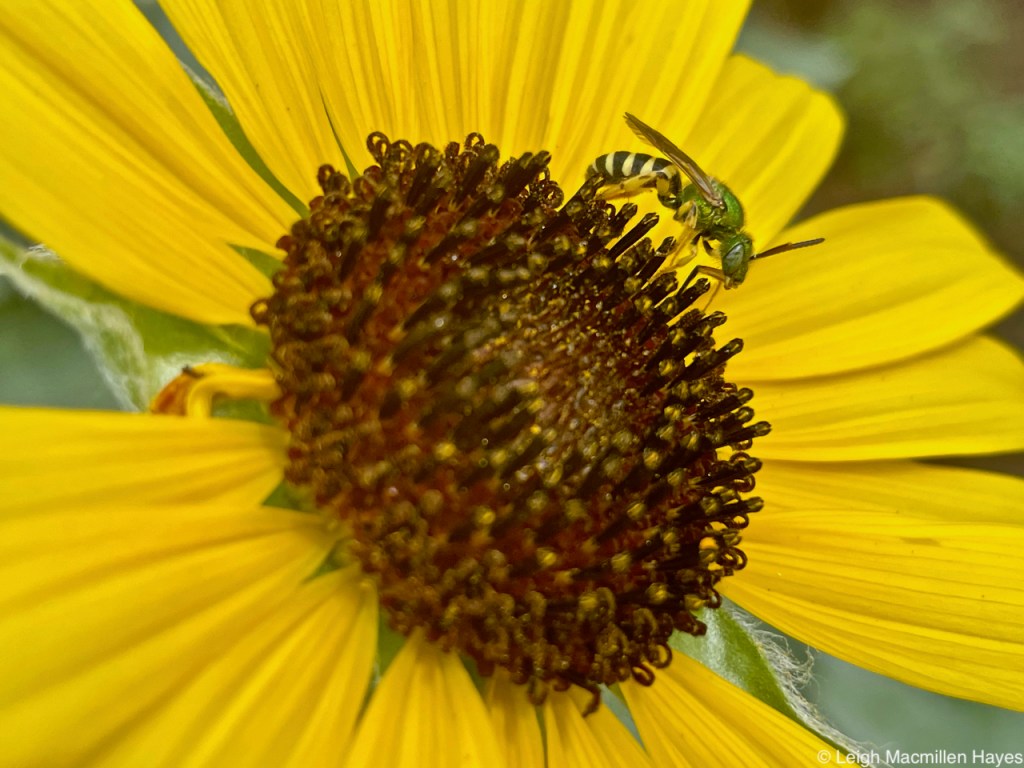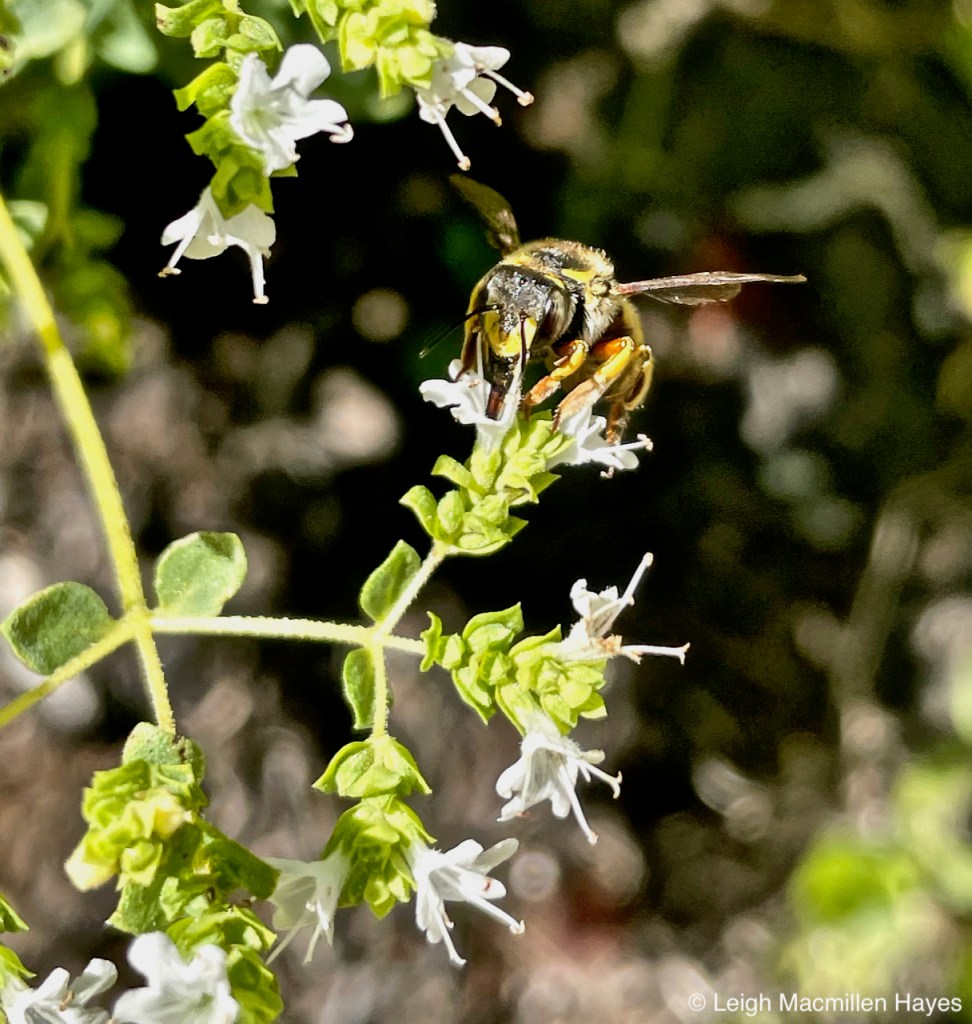Collect: to gather an accumulation of (objects) especially as a hobby.
Over the years I’ve collected many things from turtles to tea cups and seaglass and heart-shaped stones and tree cookies and dragonflies and books (oh my, yes have I ever collected books) and even . . . the crème de la crème: scat!
But today’s collection is one that is fleeting as the days are getting cooler and shorter and even if you feel as if this is all I’ve written about lately, it’s because the days are getting cooler and shorter and this collection will soon disappear. And then it will be time for SCAT again!

Yes, today’s collection is about insects, this being a Great Spangled Fritillary Butterfly. There was a time when I couldn’t be bothered with insects because I knew them as pesky things, except for the butterflies, of course. But it was when I finally decided to take a good look at them and get to know their idiosyncrasies that I realized there’s something to admire about each and every one. Well, maybe not Black Flies or Deer Flies, but then I remind myself that they are bird and dragonfly and damselfly food, and all is okay with the world once again.
One of things I’ve learned about the natural world and this butterfly speaks to it, is just how hairy many insects and plants and even tree leaves are. In the case of a butterfly, it makes sense because it begins life as a caterpillar, often a fuzzy caterpillar. And then there are those veins in the wings. And the pattern. How in the world does a caterpillar pupate and turn into soup as it digests itself, releasing enzymes to dissolve all of its tissues?And then reorganize its cells that transform rapidly to become legs, wings, eyes and other parts of an adult butterfly? How indeed!

The next insect in my collection: the Goldenrod Soldier Beetle. Though its name is for the flower it most often frequents, it can be found on any flower. There are at least 19 species of soldier beetles in North America, but this is the only one found in the Northeast: Chauliognathus pensylvanicus.
The name “soldier” apparently comes from the fact that the first species to be identified has a color pattern that reminded someone of the red coats of early British soldiers. That’s not the case with this being.

Paying attention to details is prime in learning to ID insects. Many are look-alikes and I was sure this butterfly was a Painted Lady. Instead, she’s an American Lady, due to the fact that she features a white spot on orange located on the forewing. The Painted Lady doesn’t have such a spot.

Another insect that tickles my fancy is the Sweat Bee. I’m a goner for that iridescent green head and thorax. While Sweat Bees are common on flowers, such as this tall sunflower, they also are attracted to our perspiration and this afternoon I had one that kept approaching my bare, sweaty feet.

Keeping with the bee theme, I’m always in awe when I happen upon a Tri-colored Bee, whose name speaks of its abdominal color pattern: one band of yellow, two intense orange, another yellow and then two bands of black.

Then there’s this insect. I’ve mentioned that I can stand still and not be bombarded by Bumble Bees, but this Flower Fly that chooses to mimic a bee adds a new chapter to the story. It makes the herb garden come alive with its insistent buzzing and it likes to charge at me as if it is ferocious. Intimidating? Yes. Will it sting me? No. And so I stand my ground.

One that could sting is the Honey Bee and I try to give each one I encounter the room it needs to carry out its duties of gathering pollen and nectar. Unlike Bumble Bees, Honey Bees are not native, but then again, neither am I.

That said, I have the joy of seeing many Bumbles and learned from them that while Honey Bees seem to devote their attention to one flowering species in my neck of the woods, I’ve watched the Bumbles move from one plant to another . . .

making me think that diversity is the key to their existence.
When bees visit a particular flower in the garden, I always know it before even looking for the plant that may jiggle a bit. If you click on the link above, and turn up the volume, I hope you’ll hear what I hear that signals a Bumble Bee is in a Turtlehead. When the bee squeezes into the flower and wiggles around to try to reach the nectar at the base, it causes the front “lips” to open and close as if the flower were trying to speak or the turtle snap. As you can see, the lower lip is lined with furry hairs that probably help keep out crawling insects who might steal the nectar without pollinating the flower. The bee has to push past sterile stamen to reach the nectar and I’m not sure if the sound I hear is its wings fluttering in super-fast time or the wings rubbing against the stamen and petals. It’s a tight squeeze, but as you can see from the video, the bee gets well dusted with pollen.

Of course, no insect post of mine would be complete, without a dragonfly in the midst. That said, dragonflies don’t make it in every time, but this Autumn Meadowhawk Skimmer kept landing on several bygone Daylily stalks. I thought I could get it to walk onto my hand, but though it would let me place a finger in front of it, walking onto the finger was not going to happen today. We’ll save that adventure for another day.

Since all things must come to an end, I suspect the same will soon be true for this tattered Great Spangled Fritillary Butterfly. But I rejoiced that we could spend some time together and felt I should honor it to complete my collection.

Oh, my! The Bumble in the Turtlehead :-))
LikeLiked by 1 person
Crazy BEE! Indeed.
LikeLike
Fascinating and Beautiful! Thank goodness for those pollinators!
Delightful and more to add to you picture collection. ❤
LikeLiked by 1 person
Thank goodness indeed!
LikeLike